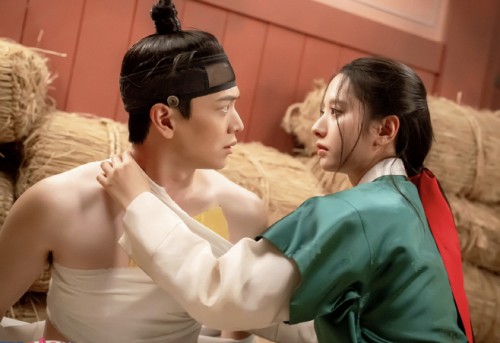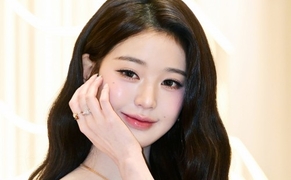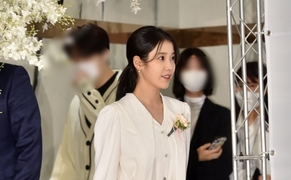 |
| Kang-cheol (played by Yook Sung-jae, left) and Yeori (played by Kim Ji-yeon), the lead characters in SBS’s popular 16-episode Friday–Saturday drama The Haunted Palace, bring both romance and humor to the story as a mischievous yet supernaturally strong imugi and a shaman who refuses her fate as a spirit medium. / Source: SBS |
SBS’s 16-episode Friday–Saturday series The Haunted Palace is capturing audiences with its fresh take on the period drama genre, sparking a new wave of enthusiasm for so-called “young sageuk” (youth-oriented historical dramas). Viewers have responded warmly to its nuanced and original character portrayals, which stand apart from more conventional historical narratives.
According to ratings agency Nielsen Korea, episode 9 of The Haunted Palace, which aired on May 16, recorded a nationwide rating of 10.7%, breaking past the coveted 10% benchmark often regarded as a measure of a drama's success. Episode 10, aired the following day, posted 9.8%, ranking second among weekend dramas — trailing only KBS2’s family series Please Take Care of the Five Eagles (18.6%), and outperforming both tvN’s Someday, Resident Life (6.6%) and JTBC’s More Beautiful Than Heaven (6.1%). Given that KBS2’s long-dominant 8–9 p.m. weekend slot has traditionally led among middle-aged and older viewers regardless of content quality, many see The Haunted Palace as the true winner of the weekend drama race.
Set in the Joseon Dynasty, the series follows the story of Yeori (Kim Ji-yeon), a shaman who resists her fate as a spirit medium, and Kang-cheol (Yook Sung-jae), a mischievous imugi (mythical serpent). The show weaves together romantic comedy, fantasy, and occult horror, winning praise for its inventive and charming characters — a key reason for its rising popularity.
One standout example is the pair of male and female "water ghosts" introduced early in the show. Initially terrifying in appearance, they regain their human looks and assist the protagonists after their grudges are resolved through Yeori’s intervention — delivering moments of both spine-tingling fear and touching empathy. Another fresh character is King Lee-jeong (played by Kim Ji-hoon), a reformist monarch who fights for both systemic change and the safety of his family by wielding sword and bow himself — a type of royal figure rarely seen in previous period dramas.
Director Yoon Sung-sik, speaking at the show’s press conference on April 17, explained, “Even ghosts had lives before they died and carried painful stories. We approached them as beings deserving of sympathy and resolution. We structured the narrative to help viewers emotionally connect with them.”
Ha Cheol-seung, a professor of creative writing at Dongduk Women’s University, commented, “The transformation of ghosts from grotesque figures to benevolent ones through the process of ‘haewon’ (resolving resentment) is something not often portrayed in horror period dramas, but it’s closely aligned with Korea’s traditional folk belief that spirits are not absolute evil but misunderstood souls needing closure.”
He added that the show’s successful blending of multiple genres is a major reason for its appeal, noting, “Alongside the newly released mystery-romance sageuk Tangeum on Netflix, we’re seeing a rejuvenated wave of period dramas that are poised to resonate not only in Korea but with global audiences as well.”
Most Read
-
1
-
2
-
3
-
4
-
5
-
6
-
7





















